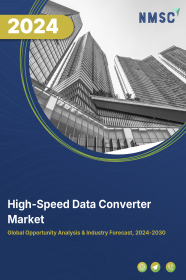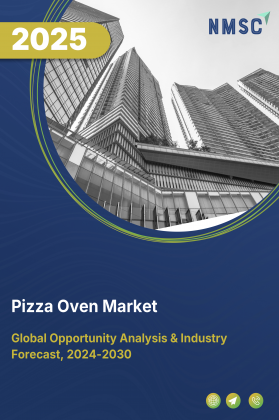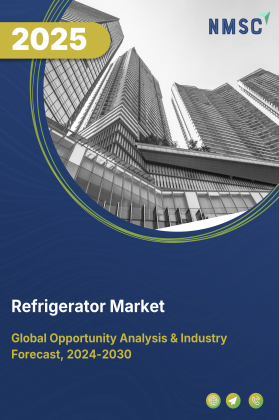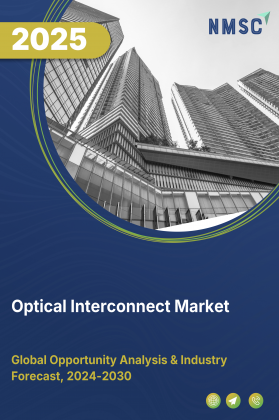
High-Speed Data Converter Market by Type (Analog-to-Digital Converter and Digital-to-Analog Converter), by Sampling Rate (High-Speed Data Converters and General-Purpose Data Converters), and by End User (Automotive, Telecommunication & IT, Consumer Electronics, Industrial, Medical, and Other End User) – Global Opportunity Analysis and Industry Forecast, 2024–2030
Market Definition
The High-Speed Data Converter Market size was valued at USD 3.06 billion in 2023 and is predicted to reach USD 4.80 billion by 2030 with a CAGR of 6.6% from 2024-2030. The high-speed data converter market involves manufacturing and distributing semiconductor devices designed to convert analog signals into digital data, operating within the gigahertz range. These converters are integral components in various applications such as telecommunications, automotive systems, aerospace, and industrial automation, where real-time data processing and transmission are critical.
The converters enable efficient processing and transmission of digital information while maintaining high accuracy and reliability. As technology continues to advance, these converters play an increasingly vital role in meeting the ever-growing demand for faster, more reliable data conversion in a wide range of industries and applications. Their ability to handle high-speed data conversion with precision ensures seamless operation and enhanced performance in modern digital systems, driving innovation and progress across numerous sectors.
Market Dynamics and Trends
The use of high-speed data converters in motor vehicles to manage critical functions such as engine performance, safety features, and environmental sensors is significantly driving the global high-speed data converters market. These converters contribute to improve vehicle performance, safety, and the overall driving experience by rapidly converting analog signals into digital data. As global motor vehicle production experiences expansion, the demand for high-speed data converters rises in tandem. According to the Association of European Automobile Manufacturers, in 2022, the global production of motor vehicles reached 85.4 million units, reflecting a 5.7% increase compared to the previous year, 2021. This increase underscores the growing reliance on high-speed data converters, reinforcing their significance within the automotive industry.
Moreover, the global surge in demand for industrial automation, aimed at enhancing productivity, efficiency, and safety, is a key driver propelling the high-speed data converter market. Industrial sensor systems are key components that enable real-time process monitoring and anomaly detection, thereby enabling optimization of automation systems. This seamless integration of industrial sensor systems with high-speed data converters not only streamlines data acquisition and processing. It also enhances the efficacy of automation solutions, to meet the evolving demands of contemporary industrial settings. For instance, in November 2023, Renesas introduced the RX23E-B, a 32-bit microcontroller (MCU) with a high-speed, high-precision analog front end (AFE) tailored for high-end industrial sensor systems, exemplifying the growing synergy between sensor technologies and high-speed data converters in driving industrial innovation.
However, the high development cost serves as a significant restraint for the high-speed data converter market by posing financial challenges to companies operating within the industry. Advanced high-speed data converters require substantial investments in research, development, and testing processes, which can be prohibitively expensive. These costs include expenses related to acquiring specialized equipment, hiring skilled engineers, conducting extensive testing, and obtaining necessary certifications. This high cost acts as a significant barrier for new market players while entering the market.
On the contrary, the emergence of quantum data converters, harnessing principles of quantum mechanics, is expected to enable the delivery of unparalleled speed, accuracy, and efficiency in data conversion. This advancement has the potential to transform industries such as telecommunications, aerospace, and scientific research in the coming years by offering groundbreaking capabilities for data processing and communication, thereby revolutionizing the way information is handled and exchanged across various sectors.
Market Segmentation and Scope of Study
The high-speed data converter market is segmented on the basis of type, sampling rate, end user, and region. On the basis of type, the market is categorized into analog-to-digital converter (ADC) and digital-to-analog converter (DAC). Based on the sampling rate, the market is classified into high-speed data converters and general-purpose data converters. On the basis of end-users, the market is classified into automotive, telecommunication & IT, consumer electronics, industrial, medical, and other end user. Regional breakdown and analysis of each of the aforesaid segments include regions comprising North America, Europe, Asia-Pacific, and the Rest of the World (RoW).
Geographical Analysis
North America holds the dominant share in the high-speed data converter market and is expected to continue its dominance during the forecast period. This is attributed to region's substantial investments in broadband infrastructure, particularly in the United States. These converters are crucial components in converting analog signals transmitted through broadband infrastructure into digital data, ensuring swift and dependable data transmission over the internet. The growing adoption of broadband networks to meet the increasing demand for high-speed internet leads the growth of high-speed data converters in this region. The United States Telecom Association reported a substantial investment of USD 102 billion in broadband infrastructure in 2022, underscoring the significant role of broadband expansion initiatives in propelling the demand for high-speed data converters within the North American market landscape.
Also, the rapid expansion of the automotive sector in countries such as Mexico and the U.S., where Advanced Driver Assistance Systems (ADAS) are widely adopted, serves as a significant driver for the growth of high-speed data converter market. These converters serve as the crucial link between the car's physical environment, captured through sensors, and its digital control systems. The converters perform a crucial role in enhancing safety, comfort, and paving the way for the future of autonomous driving. According to National Institute of Statistics and Geography (INEGI) data, domestic sales of new light vehicles surged to over 1.36 million units in 2023, marking a significant 24.4% increase from the 1.1 million sold in 2022. This surge in vehicle sales underscores the expanding demand for high-speed data converters within the automotive industry.
On the other hand, Asia-Pacific witnesses a steady rise in the high-speed data converters market due to rising online transactions, cloud-based services, and digital platforms in e-commerce industries. These converters are instrumental in handling and processing large volumes of digital data related to transactions, customer interactions, inventory management, and logistics. According to the International Trade Administration, the Indian e-commerce market is valued at USD 63.17 billion and is projected to rank first among 20 countries worldwide in retail e-commerce development between 2023 and 2027. This growth in the e-commerce industry underscores the increasing demand for high-speed data converters to facilitate rapid data processing, secure transactions, and seamless communication across digital platforms.
Moreover, the market in this region experiences a significant boost in growth due to the presence of prominent players such as Renesas Electronics Corporation, Asahi Kasei Microdevices, and Faraday Technologies. These companies drive innovation, competition, and product development, leading to advancements in technology and market expansion. Their expertise, resources, and influence shape industry trends and customer preferences, propelling the market forward. For instance, in November 2023, Renesas introduced a 32-bit RX MCU high-speed, high-precision analog front end for high-end industrial applications for enhancing high-speed data conversion capabilities in industrial settings. This innovative product offers advanced features that enhance efficiency, accuracy, and seamless integration, driving growth and adoption within the high-speed data converter market.
Competitive Landscape
The high-speed data converter market comprises various market players including Analog Devices, Inc., Texas Instruments, Inc., Infineon Technologies AG, Microchip Technology Incorporated, Renesas Electronics Corporation, STMicroelectronics N.V., Teledyne Technologies, Inc., Synopsys, Inc., Rohm Co., Ltd. and Adsantec Inc. These market players are adopting various strategies including product launches and acquisitions to maintain their dominance in the high-speed data converters market.
For instance, in November 2023, ROHM developed a new ultra-high-speed gate driver IC, the BD2311NVX-LB, specifically optimized for GaN devices. This IC features a unique gate overvoltage suppression function that, when combined with ROHM's EcoGaN products, streamlines design and improves application reliability. This technology is ideal for high-speed GaN switching applications, promoting the development of smaller, more energy-efficient, and higher performance solutions in LiDAR applications and data centers.
Also, in June 2023, Analog Devices Incorporation launched Apollo MXFE, an advanced software-defined signal processing solution for aerospace and defense instrumentation and next-generation wireless communications. The innovation enhances signal processing capabilities, impacting the high-speed data converter market with improved performance in aerospace and wireless communication applications.
Additionally, in November 2022, Texas Instruments, Inc. expanded its analog portfolio with new launches aimed at enhancing precision and speed in data conversion technology. The company introduced a new family of high-speed data converters, including the industry's fastest 18-bit Analog to Digital Converter (ADC), which bridges the gap between high-speed and precision requirements. This move showcases Texas Instruments' commitment to innovation in the field of analog semiconductor products.
KEY BENEFITS
-
The report provides quantitative analysis and estimations of the high-speed data converter market from 2024 to 2030, which assists in identifying the prevailing market opportunities.
-
The study comprises a deep-dive analysis of the high-speed data converter market including the current and future trends to depict prevalent investment pockets in the market.
-
Information related to key drivers, restraints, and opportunities and their impact on the high-speed data converter market is provided in the report.
-
Competitive analysis of the players, along with their market share is provided in the report.
-
SWOT analysis and Porter's Five Forces model is elaborated in the study.
-
Value chain analysis in the market study provides a clear picture of the roles of stakeholders.
KEY MARKET SEGMENTS
By Type
-
Analog-to-Digital Converter (ADC)
-
Digital-to-Analog Converter (DAC)
By Sampling Rate
-
High-Speed Data Converters
-
General-Purpose Data Converters
By End User
-
Automotive
-
Telecommunication & IT
-
Consumer Electronics
-
Industrial
-
Medical
-
Other End User
By Region
-
North America
-
The U.S.
-
Canada
-
Mexico
-
-
Europe
-
The UK
-
Germany
-
France
-
Italy
-
Spain
-
Denmark
-
Netherlands
-
Finland
-
Sweden
-
Norway
-
Russia
-
Rest of Europe
-
-
Asia-Pacific
-
China
-
Japan
-
India
-
South Korea
-
Australia
-
Indonesia
-
Singapore
-
Taiwan
-
Thailand
-
Rest of Asia Pacific
-
-
Rest of the World
-
Latin America
-
Middle East
-
Africa
-
REPORT SCOPE AND SEGMENTATION:
|
Parameters |
Details |
|
Market Size in 2023 |
USD 3.06 Billion |
|
Revenue Forecast in 2030 |
USD 4.80 Billion |
|
Growth Rate |
CAGR of 6.6% from 2024 to 2030 |
|
Analysis Period |
2023–2030 |
|
Base Year Considered |
2023 |
|
Forecast Period |
2024–2030 |
|
Market Size Estimation |
Billion (USD) |
|
Growth Factors |
|
|
Countries Covered |
28 |
|
Companies Profiled |
10 |
|
Market Share |
Available for 10 companies |
|
Customization Scope |
Free customization (equivalent up to 80 working hours of analysts) after purchase. Addition or alteration to country, regional, and segment scope. |
|
Pricing and Purchase Options |
Avail customized purchase options to meet your exact research needs. |
KEY PLAYERS
-
Analog Devices, Inc.
-
Texas Instruments, Inc.
-
Infineon Technologies AG
-
Microchip Technology Incorporated
-
Renesas Electronics Corporation
-
STMicroelectronics N.V.
-
Teledyne Technologies, Inc.
-
Synopsys, Inc.
-
Rohm Co., Ltd.
-
Adsantec Inc.




















 Speak to Our Analyst
Speak to Our Analyst

























